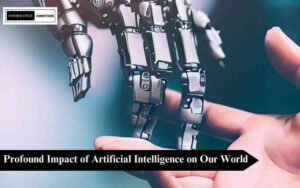In the ever-evolving landscape of technology, the integration of Artificial Intelligence Robots stands as a testament to the boundless possibilities that lie ahead. These sophisticated machines, equipped with the power of artificial intelligence, are reshaping industries, revolutionizing processes, and paving the way for a future where human-machine collaboration is not just a concept but a reality.
Understanding Artificial Intelligence Robots
Minds and Mechanics: The Fusion of AI and Robotics
Artificial Intelligence Robots are not mere mechanical entities; they represent a convergence of advanced artificial intelligence algorithms with the physical prowess of robotics. These robots are designed not only to perform predefined tasks but also to learn, adapt, and make decisions based on evolving scenarios.
1. AI in Robotics: The Brainpower Behind the Machine
Intelligent Algorithms: The Cognitive Engine
At the heart of artificial intelligence robots are intelligent algorithms that enable them to process information, recognize patterns, and make decisions. Machine learning, a subset of AI, empowers these robots to improve their performance over time through experience.
2. Physical Manifestation: Bringing AI into the Physical World
Mechanical Precision: Physical Capabilities of AI Robots
AI robots manifest their intelligence through physical actions. From humanoid robots that mimic human movements to specialized machines for industrial automation, the physicality of these robots extends their application across a diverse range of fields.
Applications of Artificial Intelligence Robots
Transformative Roles: How AI Robots are Shaping Industries
1. Manufacturing and Automation
Efficiency Unleashed: AI Robots in Manufacturing
In the manufacturing sector, AI robots are streamlining production lines, optimizing processes, and ensuring precision in tasks that demand consistency. From assembly lines to quality control, these robots contribute to increased efficiency and reduced operational costs.
2. Healthcare Assistance and Surgery
Precision Healing: AI Robots in Healthcare
In the realm of healthcare, AI robots are playing pivotal roles in surgery, diagnostics, and patient care. Surgical robots with AI capabilities enhance the precision of procedures, while robotic companions provide support and assistance to patients.
3. Autonomous Vehicles and Transportation
On the Road to Autonomy: AI in Transportation
AI robots are driving the future of transportation through the development of autonomous vehicles. These robots use advanced sensors and algorithms to navigate, making transportation safer, more efficient, and less reliant on human intervention.
4. Personal and Domestic Assistance
Robotic Companions: AI in Daily Life
In households, AI robots are taking on roles beyond mere automation. From smart home devices that learn and adapt to user preferences to robotic assistants that aid in daily tasks, these machines are becoming integrated into the fabric of our daily lives.
Challenges and Ethical Considerations
Navigating the Complex Landscape: Addressing Challenges
1. Job Displacement and Economic Impact
Economic Evolution: Balancing Job Dynamics
The rise of AI robots raises concerns about job displacement. While these machines enhance efficiency, there is a need to address the potential impact on employment and explore avenues for upskilling the workforce to align with evolving technological landscapes.
2. Ethical Decision-Making in AI
Moral Machines: The Challenge of Ethical AI
As AI robots make decisions based on algorithms, ethical considerations come to the forefront. Ensuring that these machines operate ethically and without bias requires ongoing dialogue, regulatory frameworks, and a commitment to responsible AI development.
Advancements in Artificial Intelligence Robotics
Beyond Boundaries: Future Developments in AI Robotics
1. Cognitive AI and Emotional Intelligence
Mindful Machines: AI with Emotional Understanding
Future AI robots are expected to exhibit cognitive abilities, including emotional intelligence. This advancement opens doors to robots that can understand human emotions, respond empathetically, and enhance their interaction capabilities.
2. Swarm Robotics
Collective Intelligence: AI Robots Working in Swarms
Swarm robotics involves multiple AI robots working collaboratively to achieve a common goal. Mimicking the collective behavior of natural swarms, these robots can enhance efficiency in tasks such as search and rescue operations or environmental monitoring.
3. Human-AI Collaboration
Synergistic Partnerships: Humans and AI Working Together
The future holds the promise of closer collaboration between humans and AI robots. This collaborative approach leverages the strengths of both, with AI robots handling repetitive tasks, data analysis, and precision, while humans contribute creativity, critical thinking, and emotional intelligence.
Considerations for Adopting AI Robots
Guiding the Transition: Factors to Ponder in AI Integration
1. Clear Objectives and Use Cases
Strategic Implementation: Defining Purposeful Integration
Before adopting AI robots, organizations should define clear objectives and use cases. Understanding the specific tasks these robots will perform ensures a strategic and purposeful integration that aligns with organizational goals.
2. Robust Training and Support Systems
Knowledge Transfer: Equipping Teams for AI Integration
A successful transition to AI integration requires robust training and support systems. Ensuring that human teams are equipped with the knowledge and skills to work alongside AI robots is essential for a seamless collaboration.
3. Continuous Monitoring and Adaptation
Agile Integration: Embracing Continuous Improvement
The integration of AI robots is not a one-time event but an ongoing process. Continuous monitoring, feedback mechanisms, and adaptations are crucial for optimizing performance, addressing challenges, and ensuring the longevity of AI integration.
Conclusion: Navigating the Future with AI Robots
In conclusion, the integration of Artificial Intelligence Robots marks a transformative era in technology. As these machines continue to evolve, their impact on industries, economies, and daily life will become increasingly pronounced. Navigating this future requires a balance between embracing innovation and addressing the challenges and ethical considerations that accompany it. From manufacturing floors to surgical suites and our homes, AI robots are becoming integral partners in our journey toward progress. As we venture into this era of technological marvels, let us embrace the opportunities, responsibly harness the power of AI, and collectively shape a future where the synergy between humans and intelligent machines propels us into new realms of possibility.
Read More Informative Blogs on Informative Junction




